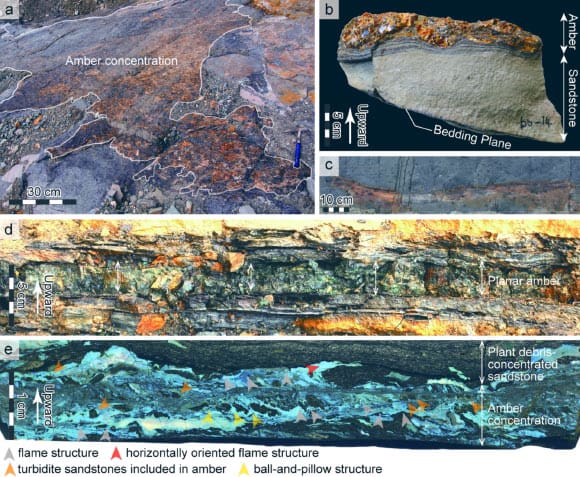Named the Carnarvon flapjack octopus (Opisthoteuthis carnarvonensis), the new species is a small (around 4 cm in diameter), gelatinous octopus with massive eyes and blood-red tentacles.

The Carnarvon flapjack octopus (Opisthoteuthis carnarvonensis). Image credit: T.J. Verhoeff, doi: 10.54102/ajt.c46g9.
Flapjack octopuses are deep-sea octopods within the family Opisthoteuthidae, members of the finned octopod suborder Cirrata.
There are approximately 50 described species worldwide, with 15 species recorded from Australian waters.
These octopuses have the ability to flatten its body to resemble a pancake — or flapjack, hence their name — or to pull itself up to look like a tiny gelatinous umbrella.
They have large eyes relative to their body size, enhancing their ability to detect prey in the dimly lit depths that they live.
They eat worms and small crustaceans, using their tentacles to capture and consume their prey.
“The opisthoteuthid cirrate octopods are distinguished from the other cirrate families by a combination of external and internal features,” said Dr. Tristan Verhoeff, a systematic taxonomist with the Tasmanian Museum and Art Gallery Collections and Research Facility.
“The very short dome-like mantle with terminal fins, relative to proportionally massive eyes and thick arms, are visually distinct.”
“Internally the presence of a branched optic nerve, and internal shell (gladius remnant) without lobe-like ends is only shared by the related Cirroctopodidae, though these are distinguished by having proportionally massive fins, lacking male enlarged suckers, and in having a unique pallial adductor.”
Opisthoteuthis carnarvonensis is the tenth and latest new species to be described from specimens collected during a 2022 voyage by research vessel (RV) Investigator.
During the month-long voyage, the researchers used high-tech cameras, nets and sleds to collect samples and capture images from thousands of meters below the ocean surface.
Five specimens used to describe the new species were collected from depths of 1,044-1,510 m in and around the Carnarvon Canyon and Gascoyne Marine Parks in Western Australia.
“The 2022 voyage off Western Australia has been vital for increasing our understanding of the seafloor habitats and biodiversity in the region,” said Dr. Venetia Joscelyne, a researcher at CSIRO Marine National Facility.
“This was the first time the Carnarvon Canyon and Gascoyne Marine Parks have been mapped in detail and explored to depths of more than 5,000 m.”
“Conducting research in remote, offshore, or deep ocean environments is generally challenging but RV Investigator provides researchers with an impressive range of capabilities to do this.”
“From this single research voyage alone, we are seeing many new marine species being described.”
“Incredibly, scientists estimate that there are likely more than 1,000 new species waiting to be described from specimens collected on RV Investigator voyages over the past 10 years.”
“These discoveries are vital in helping us understand the conservation needs of the marine parks and will assist Parks Australia in maintaining the marine parks’ natural values in the future.”
“Australia has a higher biodiversity of dumbo octopus species compared to other countries but many of these species have only been recorded or described in the past few years,” Dr. Verhoeff said.
“The Carnarvon flapjack octopus, which was named for the location where it was found, is only known from the Carnarvon Canyon and Gascoyne Marine Parks off northwestern Australia.”
“Its presence adds extra value to these recently established marine parks.”
“This species discovery increases our understanding of Australia’s deep-sea ecology and biodiversity.”
“Describing new species is also essential for future work on their ecology, and assessing populations for conservation.”
“Discovering new species of large-bodied marine animals illustrates how little we still know about the deep sea in this area,” said Dr. Lisa Kirkendale, a researcher at the Western Australia Museum.
A paper describing the discovery was published this month in the Australian Journal of Taxonomy.
_____
T.J. Verhoeff. 2025. Flapjack octopods of Australia (Cephalopoda: Cirrata: Opisthoteuthidae), Part II: northwestern Australia and adjacent waters. Australian Journal of Taxonomy 92: 1-28; doi: 10.54102/ajt.c46g9


